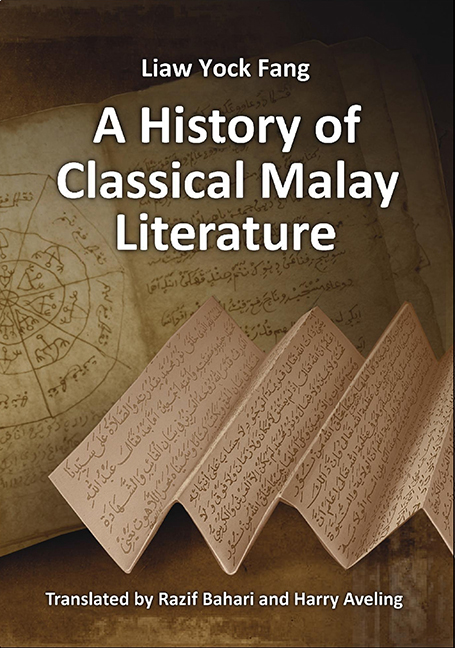Book contents
- Frontmatter
- Contents
- Preface
- List of Abbreviations
- Chapter I Folk Literature
- Chapter II The Indian Epics and The Wayang in Malay Literature
- Chapter III Javanese Panji Stories
- Chapter IV Literature Belonging to the Period of Transition from Hinduism to Islam
- Chapter V Literature of the Islamic Age
- Chapter VI Framed Narratives
- Chapter VII The Literature of Islamic Theology
- Chapter VIII Historical Literature
- Chapter IX Classical Malay Law Codes
- Chapter X Poetic Forms (Pantun and Syair)
- Bibliography
- Index
- Biographical Details
Chapter III - Javanese Panji Stories
Published online by Cambridge University Press: 21 October 2015
- Frontmatter
- Contents
- Preface
- List of Abbreviations
- Chapter I Folk Literature
- Chapter II The Indian Epics and The Wayang in Malay Literature
- Chapter III Javanese Panji Stories
- Chapter IV Literature Belonging to the Period of Transition from Hinduism to Islam
- Chapter V Literature of the Islamic Age
- Chapter VI Framed Narratives
- Chapter VII The Literature of Islamic Theology
- Chapter VIII Historical Literature
- Chapter IX Classical Malay Law Codes
- Chapter X Poetic Forms (Pantun and Syair)
- Bibliography
- Index
- Biographical Details
Summary
The Panji stories
Panji stories were a product of Javanese literature. They were very popular among Indonesians, especially among the Javanese and Balinese, but also among the Malays who adapted them into a prose form known as the hikayat intended for recitation to an audience by a storyteller. The enduring popularity of the Panji tales is evidenced by the many old Panji manuscripts that can be found in various libraries in London, Leiden, Jakarta and Kuala Lumpur. Its prevalence may be attributed to the fact that, like the much-loved penglipur lara (soother of woes) tales, they often tell stories of adventure and war. Perhaps what makes the Panji stories even more widespread is that they sometimes contain erotic love stories and comical tales depicting the antics of punakawans (court jesters or clowns) which can, at times, be downright bawdy and risqué—something that cannot be found in the tales of the penglipur lara. The spread of Panji stories could also be partly due to propaganda purveyed by the Javanese themselves.
A number of in-depth studies have been done by scholars on the Panji stories. Among these, the one that most deserves our attention is the work of Dr W. H. Rassers. In his dissertation, De Pandji Roman, Rassers explicates the origins of the Panji stories at great length. According to him, the Panji stories may have had their origins in an ancient myth about the moon and sun, as found in the story of Kalangi and Manimporok of the Minahasa (Sulawesi) region. The myth tells of two gods, Kalangi and Manimporok, who were good friends. One day, Manimporok called on Kalangi who was not at home at the time. Seeing Kalangi's wife, Kalongkopan, alone at home, lust got the better of Manimporok and he abducted her. Upon returning home, Kalangi was devastated when he found his wife gone. Pining for her, he spent his days making a figurine that looked like her. In the end, the figurine came to life and became Kalangi's new wife.
- Type
- Chapter
- Information
- A History of Classical Malay Literature , pp. 113 - 141Publisher: ISEAS–Yusof Ishak InstitutePrint publication year: 2013

